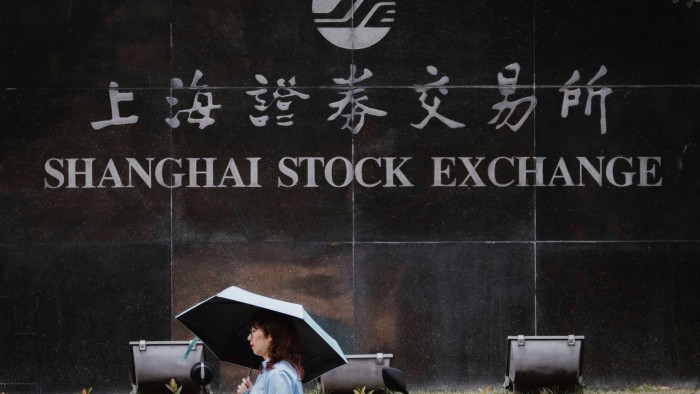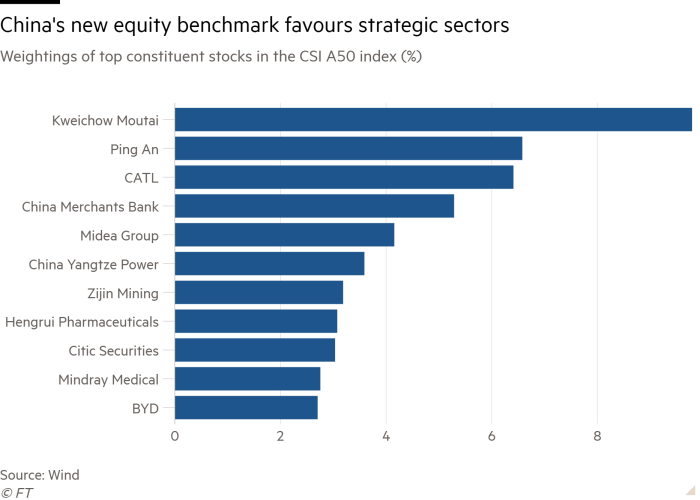China launches new blue-chip stock index to push growth sectors

Roula Khalaf, Editor of the FT, selects her favourite stories in this weekly newsletter.
China’s stock exchanges have launched an additional blue-chip equity benchmark as part of an effort to boost investment in listings deemed strategically important to Beijing.
Investors and analysts said the CSI A50 index, which debuted on Tuesday, was intended to spur the creation of investment products that grant greater weightings for sectors such as renewables and semiconductor manufacturing — areas central to policymakers’ vision for economic transition and national security.
The introduction of the new benchmark follows a protracted sell-off for Chinese equities that spurred record outflows of foreign money and left the country’s CSI 300 index of Shanghai- and Shenzhen-listed stocks down more than 11 per cent in 2023 amid disappointing economic growth. By comparison, the S&P 500 rose more than 24 per cent over the same period.
Shanghai’s stock exchange, which jointly owns the China Securities Index Company together with its counterpart in Shenzhen, told state media this week that it would ensure the index provider “enriches the product pool of stock indices, which will be leveraged to showcase the gear-change in China’s economic structure”.
The top constituents of the CSI A50 include Kweichow Moutai, the world’s most valuable liquor listing, battery company Contemporary Amperex Technology Co, chipmaker Semiconductor Manufacturing International Corp and Jiangsu Hengrui Pharmaceuticals.
The gauge’s diversified focus contrasts with existing benchmarks that give short shrift to newer drivers of economic growth, due to their weightings being based primarily on market capitalisation.

Analysts said foreign and institutional investors in China tended to focus on the CSI 300, which favoured financial stocks, while retail traders typically kept tabs on the finance and industry-heavy Shanghai Composite index.
“In recent years, we’ve seen rapid growth in areas that aren’t necessarily reflected in the conventional indices that retail and foreign investors tend to track,” said Jason Lui, head of east Asia strategy at BNP Paribas. “You can think of [the CSI A50] as a blue-chip index with proper sector diversification built in.”
Filings on the website of China’s securities regulator show 10 fund managers — including JPMorgan Asset Management’s local retail business — have already applied to launch exchange traded funds tracking the new index.
“This new index is quite diversified and representative,” said Zhang Qi, an analyst at Haitong Securities. “The highlight is the inclusion of new energy-related shares, which represents the direction of China’s new economy.”
“Prior to this, foreign investors generally tracked the CSI 300 index,” said a Shanghai-based fund manager at one foreign asset manager. “Now these funds have a new option.”
But investors said there was no guarantee the CSI A50 — which has fallen 2.6 per cent since its launch — would pose a serious challenge to existing stock benchmarks that have enjoyed decades of attention from China’s financial press.
“For us, the next step is looking to see how much inflows these products [tracking the CSI A50] really generate,” said Lui, at BNP Paribas. “It’s still too early to tell, but from our perspective, there are now more choices in the market to allow investors to express more and different views.”
Comments